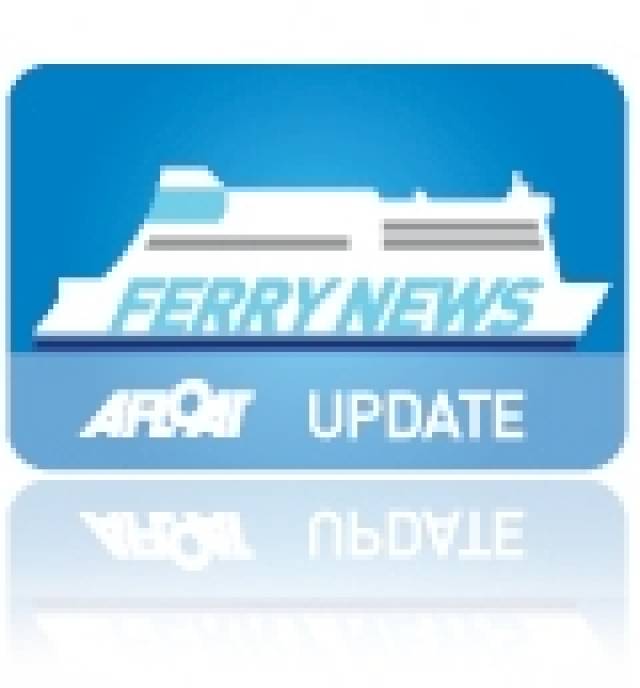#StenaHSSroute? – Afloat.ie has recontacted Stena Line if it is to resume Dun Laoghaire-Holyhead summer season service in 2015, given also their 'commercial and operational reasons' for cancelling Christmas sailings on this occasion, writes Jehan Ashmore.
When questioned on the discussions between Stena Line and Dun Laoghaire Harbour Company, the ferry firm reiterated that they are currently engaged in on-going discussions with Dun Laoghaire Harbour in relation to the provision of a seasonal fast craft service in 2015.
Since the introduction of HSS fast-craft operations on the Irish Sea in 1996, this is the first time that no sailings will be provided over the festive and early New Year periods. Passengers with bookings or those planning to travel will according to the company "be accommodated on other sailings best suited to their travel requirements". The company operate conventional ferries on the Dublin Port-Holyhead service.
Afloat.ie also inquired if Stena Line are considering an alternative to replace the 1500 passenger /375 car HSS fast-craft Stena Explorer with their smaller 900 passenger /210 car Stena Carisma or another fastcraft option? The ferry operator did not confirm or deny as the response given was simply the same reply as to the first question posed above.
Earlier this year, Stena Line withdrew the Stena Carisma from the Gothenburg-Frederikshavn route on the Kattegat Sea linking Sweden and Denmark. The 2 hour crossing time by fast-craft on the Scandinavian route is similar to the Irish Sea route which takes an additional 10 minutes.
Should a smaller craft be introduced and not the HSS 900, the issue of port infrastructure would seem less likely to require berth linkspan adaptation.
Unlike the 19,638 tonnes Stena Explorer built by Finnyards in 1996 and as the first of a trio of High Speed Sea-Service (HSS) 1500 sisters commissioned, the 'Carisma' was the only HSS 900 class craft completed for the Swedish owned ferry giant.
The 8,631 tonnes HSS 900 was built by the Westamarine Byggs yard in Norway. Work did take place on a sister however this ceased having only achieved 30% of construction.
The absence of the HSS Stena Explorer leaves only rivals Irish Ferries currently operating fast-craft services on the central corridor Dublin-Holyhead route served by Jonathan Swift. The 800 passenger/ 200 car Austal built fast-craft is similar to the passenger and vehicle capacity of Stena's Carisma.
As previously reported, Irish Ferries announced they are to boost capacity by bringing ro-pax Isle of Inishmore onto the Dublin-Holyhead route, which in addition to Jonathan Swift is served by flagship Ulysses and ro-pax Epsilon.
The chartered Epsilon also runs a Dublin-Cherbourg service but only by sailing a round-trip at weekends.






























































